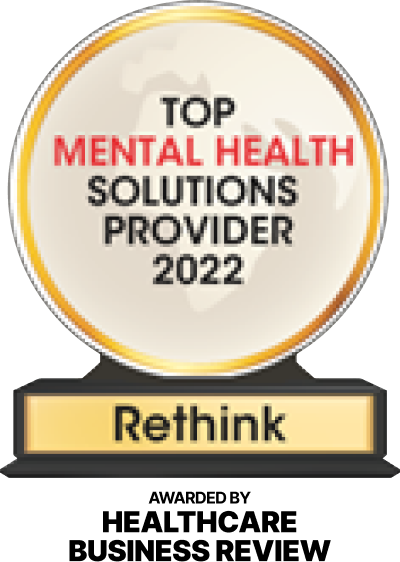We spend more of our time working than doing anything else, and researchers have found that these hours are on average the least happy of our lives. Endemic stress in knowledge-based industries accounts for a large proportion of workplace absence and represents a huge loss of national productivity. Meanwhile, success in most organizations relies on the very things that unhappiness and stress erode – collaboration, creativity, cognitive flexibility and effective decision-making.
New perspectives from psychology and neuroscience, are increasingly helping leaders to see that the cognitive and emotional resources of their colleagues determine the health, resilience and future performance of their businesses and institutions.
In this context, organizations are understandably keen to experiment with innovations that develop the internal resources of individuals and keep their minds healthy, much as businesses already invest in employees’ professional skills and physical health. Mindfulness training has been at the forefront of this trend – in part owing to its growing popularity outside of the workplace through a proliferation of public courses, books and apps like RethinkCare, but also because it seems to benefit people across a broad spectrum of wellbeing. Mindfulness training is being used to help those with repeat episode depression, for instance, but also those seeking new forms of personal development and connection with the world around them.
Mindfulness is a natural capacity, present in all of us to some extent. It involves paying purposeful attention to our experience, with particular attitudes like openness and curiosity. We are all too familiar with its opposite: a heedless, distracted state of mind that’s often described as ‘autopilot’. This default inattentiveness, distraction and disengagement from present experience can mean we react to life out of habit or impulse rather than care and consideration. When we spend more time alive to our experience, however, we unlock our potential for learning and growing and more fulfilling relationships and are better able to respond creatively to life’s challenges.
What is mindfulness?
The cultivation of mindfulness is commonly associated with Buddhist traditions, but over the last 40 years these practices have been combined with modern psychological theory and developed into a secular training that has been the subject of many thousands of scientific trials.1 According to leading mindfulness researchers, to say that mindfulness is Buddhist is akin to saying that gravity is Newtonian.2 Instead, mindfulness is best considered an inherent human capacity akin to language acquisition;3 a capacity that enables people to focus on what they experience in the moment, inside themselves as well as in their environment, with an attitude of openness, curiosity and care.4 In fact we are all somewhat mindful some of the time, but we can choose to cultivate this faculty and refine it to ever-greater degrees of being present, focused and aware through practice.
Being mindful does not necessarily involve meditation, but for most people this form of mind-training is required to strengthen the intention to stay present and cultivate an open and allowing quality of mind.5 Particularly in a business context therefore, “Mindfulness” is most often referred to as a practice that individuals and teams can do on a day-to-day basis.
Secular methods of cultivating mindfulness have been available since the development of Mindfulness-Based Stress Reduction (MBSR) and Mindfulness-Based Cognitive Therapy (MBCT) programs for treating physical pain and poor mental health in the 1980s and 1990s (practices which are consistent with those found in the RethinkCare app). These clinical interventions generally entail eight weekly classes of up to two and a half hours each, however a great deal of innovation over the last decade has led to a proliferation of programs with varying lengths, intensities and delivery styles developed for very different audiences.
Organisational Mindfulness
Workplace mindfulness is possible not only for individuals, but within and across teams of people. This means that mindfulness is a multi-level concept, associated with benefits for individual employees as well as for the organization as a whole, and it can be trained through personal, relational and social practices in addition to meditation and contemplation.6 When mindfulness becomes a shared social practice in an organization, and permeates routines, processes and practices between people and across teams, then the organization as a whole becomes more resilient and performs more sustainably.7 Hence collective mindfulness can be described as:
“The combination of ongoing scrutiny of existing expectations, continuous refinement and differentiation of expectations based on newer experiences, willingness and capability to invent new expectations that make sense of unprecedented events, a more nuanced appreciation of context and ways to deal with it, and identification of new dimensions of context that improve foresight and current functioning.”8
A recent review of the scientific literature concludes that mindfulness is fundamentally connected to many aspects of sustainable success in the workplace – and specifically with respect to Wellbeing, Relationships and Performance.9
About the Author: This excerpt was edited and reprinted with the permission of our friends at The Mindfulness Initiative. To learn more about their work, please visit www.themindfulnessinitiative.org.
Find the original work here.
View References
1 Brown, K.W., Ryan, R.M. & Creswell, J.D. (2007). Mindfulness: Theoretical foundations and evidence for its salutary effects. Psychological Inquiry, 18, 211-237.
2 Brown, K. W., Ryan, R. M., Loverich, T. M., Biegel, G. M., & West, A. M. (2011). Out of the armchair and into the streets: Measuring mindfulness advances knowledge and improves interventions: Reply to Grossman (2011). Psychological Assessment, 23, 1041–1046.
3 Dane, E. (2011). Paying Attention to Mindfulness and Its Effects on Task Performance in the Workplace. Journal of Management, 37(4), 997-1018.
4 Kabat-Zinn, J. (2005). Wherever you go there you are: Mindfulness meditation in everyday life. New York: Hyperion.
5 Brown, K.W. & Ryan, R.M. (2003). The benefits of being present: Mindfulness and its role in psychological well-being. Journal of Personality and Social Psychology, 84, 822-848. Potential Business Benefits
6 Sutcliffe, K. M., Vogus, T. J. & Dane, E. (2016). Mindfulness in organisations: A Cross-Level Review. Annual Review of organisational Psychology and organisational Behavior,3, 55-81.
7 Weick, K. E. & Sutcliffe, K. M. (2006). Mindfulness and the Quality of organisational Attention. organisation Science, 17(4), 514-526.
8 Weick, K. E. & Sutcliffe, K. M. (2001). Managing the Unexpected. Jossey-Bass: San Francisco, CA.
9 Good, D.J., Lyddy, C.J., Glomb, T.M., Bono, J.E., Brown, K.W., Duffy, M.K., … & Lazar, S.W. (2016). Contemplating mindfulness at work: An integrative review. Journal of Management, 42(1), 114-142.










